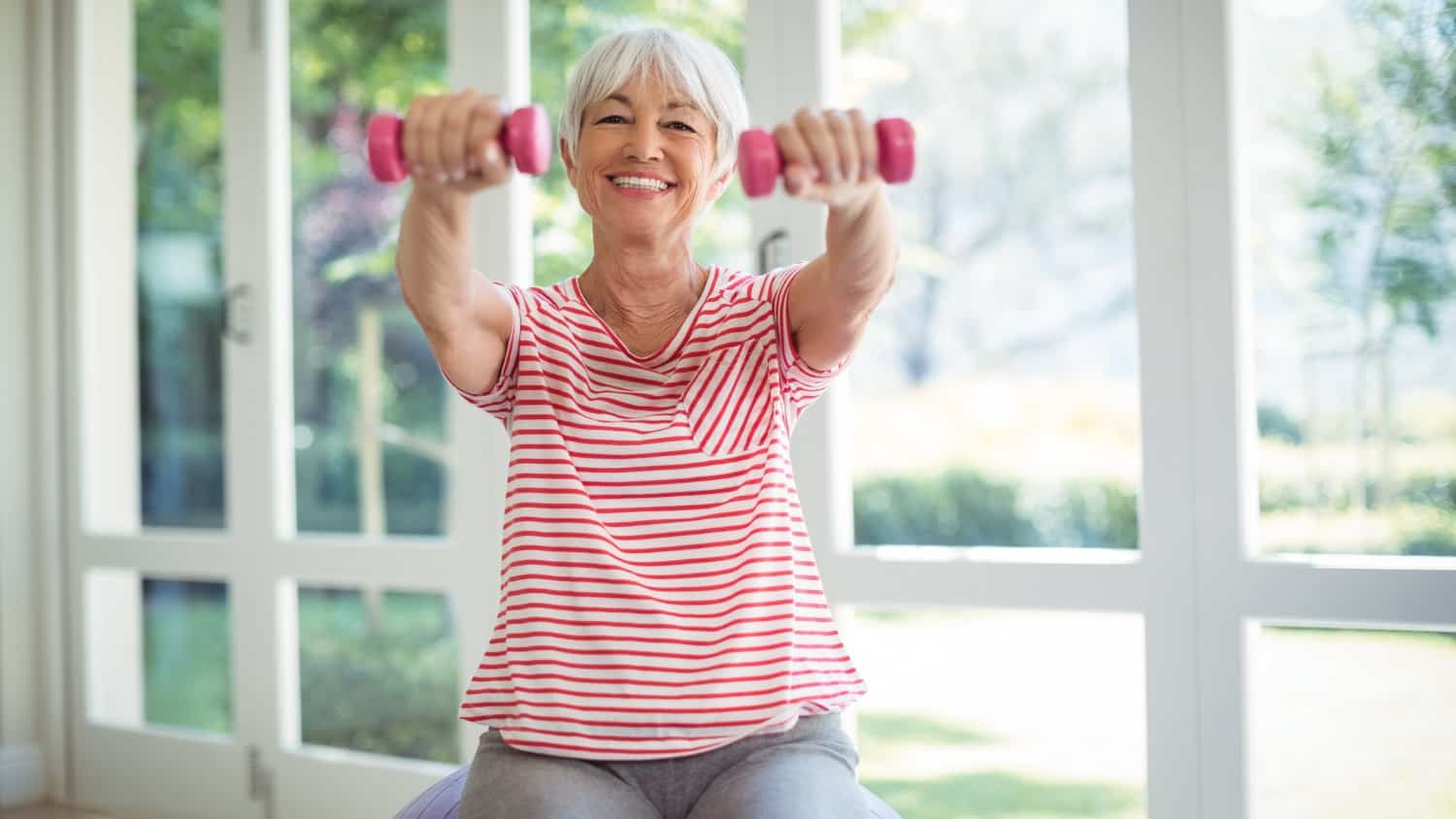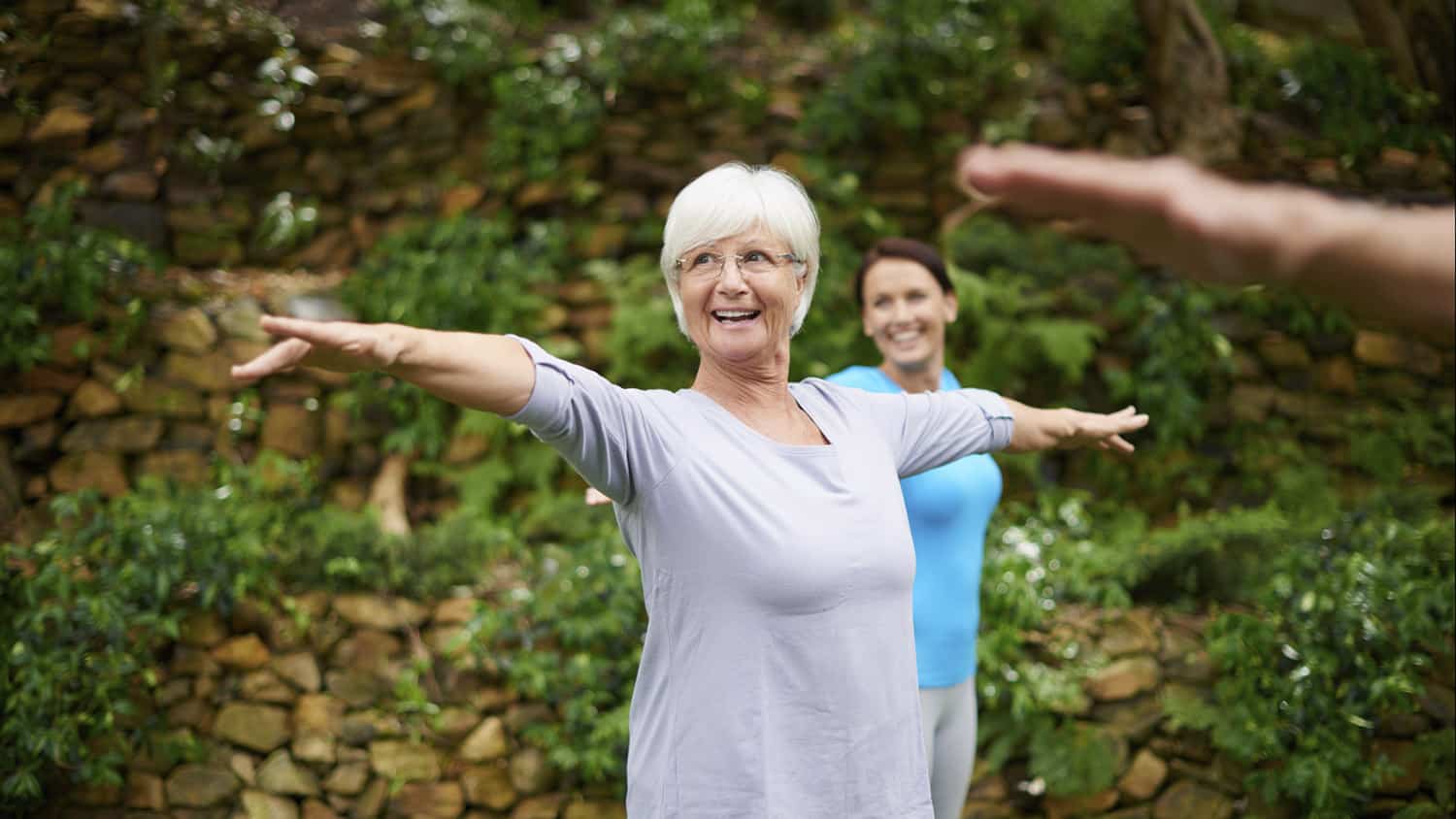
Take Charge of Independence: It’s Time to Retain Strength and Mobility During Self-isolation
I hope this article finds each one of you healthy and feeling resilient. Last month I talked about both physical and psychological resilience. Today, I want to give you some very specific things to do to retain strength and mobility.
It’s easy to discount how much activity you would normally get in a day even if you’re not “intentionally exercising.” That’s why it’s so important to ensure you are doing what’s necessary to retain functional ability during this time of social distancing.
If you’ve read my blogs before, you know that strength declines on average at the rate of about 1–1 ½% per year after around age 30. This can lead to losing up to half your strength by age 70.
Consider that if you lose half your strength it’s about equivalent to going about your daily tasks with a backpack filled with your body weight (i.e., half the strength requires twice the effort).
Dramatic Strength Loss
Unfortunately, this loss dramatically accelerates with very sedentary behavior. One research study had college-aged male athletes stay bed-bound for one week to assess functional loss.
They stopped the test even before the week was up because they were recording a strength loss of about 1–1 ½% per day. You read that right – PER DAY!
Gratefully, these young male athletes had very large functional reserves to absorb this loss and were able to regain their strength with training. While we are not all bed-bound due to this isolation – a sedentary lifestyle will result in functional loss.
The Silent Thief
I’m most concerned that this quarantine will quietly rob some people of functional independence. If you’ve been intentionally exercising to build up your strength, mobility, and endurance you will have what they call functional reserve – like a functional “emergency fund.”
Just like having an emergency expense fund brings peace of mind (and food to the table), a functional emergency fund buffers you from loss of independence.
However, if you’re independent – able to perform all your basic (self-care) and instrumental (shopping, cooking, home-care, etc.) activities of daily living – but don’t have much functional reserve, you’re in danger of premature functional loss.
Without functional reserves, many adults over 60 will have more difficulty with normal activities once life returns to normal.
The biggest danger here is that without intervention – if you brush off the (perhaps) subtle changes in function or just consider functional loss as a “normal” part of aging – then you will be allowing this set-back to become a new health set-point.
Take Action
To prevent this loss, you MUST replace the physical activity you are no longer doing in the current situation of self-isolation.
For example, consider what it takes to get ready to go somewhere: getting dressed, walking to the car, getting in/out, going into the store, walking about the isles, reaching/bending/lifting/placing, carrying bags of items, walking back to the car, getting in/out, etc. You get the idea.
If you’re not doing any of those things (in addition to what you normally do around the house) you need to intentionally replace those movements with functional exercises!
Opportunities to Exercise
I encourage you to take advantage of the opportunities to be as active as possible. This might be as simple as choosing to stand-up and sit-down, doing knee lifts, etc. during every commercial break on TV.
For example, try this Elevator exercise to improve leg strength.:
If you have to go get something in the bedroom, walk to the opposite side of the house first before going back to retrieve the item! Add extra movement every time!
There are many on-line opportunities to exercise. Commit to following along at least several times a week, or better yet, use this very strange time in all our lives to hit the re-set button and commit to building up your functional reserve.
Also, consider using this time to create and follow a Vitality Plan to prevent these types of events from being permanently life-altering.
My Gift to You
There are many tools online that you can choose from. I’m offering a package of free resources including videos and downloadable/printable materials:
COVID-19 SUPPORT Stay Active and Resilient (FREE Resources)
Fill out the form so you will have continuous access through the link you will receive in your email.
How are you currently maintaining your level of physical activity? Has it been more difficult to stay motivated to exercise when you can’t attend group classes? Is there anyone you can share this information with – church groups, social groups, senior service organizations? Let’s have a conversation!
Tags Fitness Over 60





